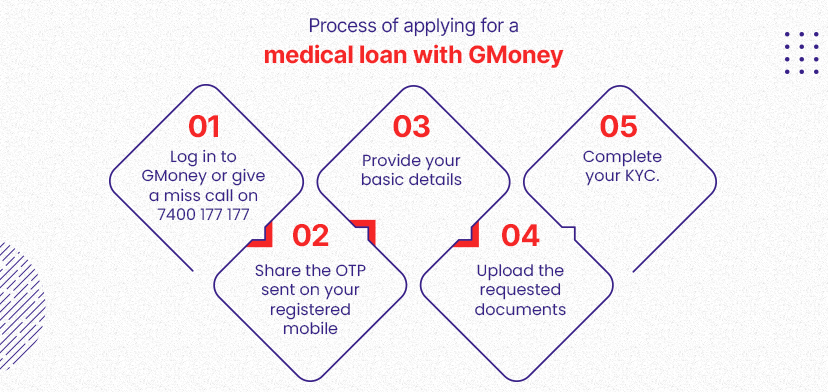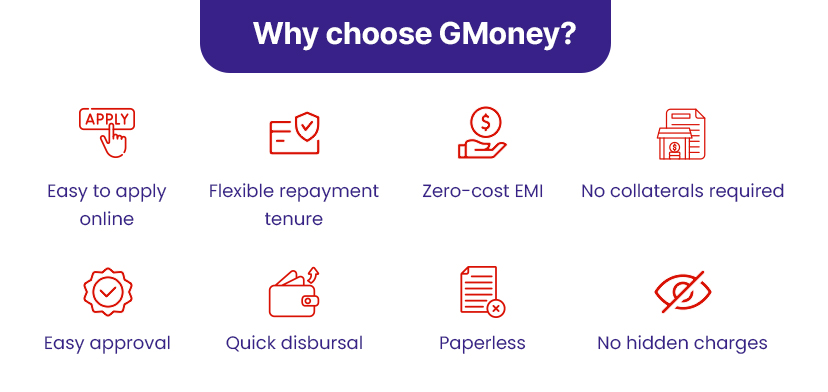Home » Diabetic Foot Treatment: What to Expect in Bengaluru

Diabetes is a pervasive, long-term condition that affects millions of people all over the world. Diabetes affects approximately 50.86 per cent of the population in Bengaluru. This disorder causes a variety of health problems, including the diabetic foot. Diabetic foot is a common and unpleasant diabetic condition. It is caused by a combination of poor circulation and nerve injury, which increases the likelihood of infection and tissue death.
Diabetic foot treatment in Bengaluru can be expensive, and many people cannot afford it. Fortunately, there are a number of diabetic foot treatments available in Bengaluru that can help control the condition and limit the risk of future complications. This blog will cover what to expect from diabetic foot treatment in Bengaluru and how to get the finest therapy using a loan for diabetic foot treatment.
A. Elevated Blood Sugar Levels:
One of the main reasons for diabetic foot is high blood sugar levels, which can damage blood vessels and nerves in the feet over time.
B. Nerve Injury:
Another cause of diabetic foot is nerve damage, often known as neuropathy, which can cause numbness and decreased sensation in the feet. This makes it more difficult for diabetics to detect foot injuries or blisters, increasing the risk of infection.
C. Circulatory Issues:
Poor circulation in the feet can also contribute to diabetic feet. This can reduce the passage of oxygen and nutrients to the feet, making wound healing difficult and increasing the risk of infection.
It’s important to realise that these causes are interconnected, and persons with diabetes commonly have a combination of high blood sugar levels, nerve damage, and circulation issues in their feet. By recognising the underlying reasons, we can aim to avoid or manage diabetic foot.
It is critical to get medical assistance from the best diabetic foot surgeon in Bengaluru after spotting a potential problem to diagnose and treat diabetic foot.
Diabetic foot appointments often include a physical assessment and discussion of the patient’s medical history and current lifestyle. X-rays may be done to check for symptoms of illness or injury, and the doctor may order another testing, such as nerve conduction studies or blood tests.
Depending on the diagnosis, the doctor may recommend a course of therapy and lifestyle adjustments to help lessen symptoms and problems.
A. Medical procedures
Pain Relief and Infection Prevention Medications
Appropriate Wound Care
Maintaining a clean and dry damaged foot, as well as applying and changing bandages on a regular basis, can help prevent infections and promote wound healing.
To speed the healing process, topical or oral treatments such as growth hormones, silver dressings, or hyperbaric oxygen therapy may be administered.
B. Surgical techniques
Debridement of Dead Tissue
Amputation in Serious Cases
C. Changes in lifestyle
Proper Foot Care
Physical Activity and Physical Therapy
It is vital to note that the best diabetic foot care is determined by the severity of the condition and the individual’s overall health. The best results can be obtained through a multidisciplinary approach that includes a healthcare practitioner, a podiatrist, and a physical therapist.
Diabetic foot treatment in Bengaluru might cost between Rs. 40,000 and Rs. 55,000. It differs depending on the ailment’s severity and the chosen treatment choices. Drugs and proper wound care can help diabetic foot patients avoid more serious problems and improve their outcomes. Surgical operations such as amputation may be required if the condition is severe enough.
Amputation is an expensive treatment that might strain families’ finances. However, avoiding more serious complications, such as gangrene, and improving the quality of life for diabetic foot patients is sometimes necessary.
GMoney provides medical loans that are specifically designed to assist people and families in managing the costs of diabetic foot treatment and other healthcare requirements. GMoney loan for medical treatment is designed for each individual’s particular financial circumstances and can assist in covering the costs of diabetic foot drugs, operations, and other treatments.
GMoney makes it simple to apply for a loan and can deliver a swift decision, allowing treatment to begin as soon as possible. Individuals and families can rely on GMoney for the financial assistance required to manage their diabetic foot care.

1) What exactly is a diabetic foot?
Diabetic foot is a diabetes consequence that affects the feet and can cause pain, infection, and amputation.
2) Why is a diabetic foot a worry for those who have diabetes?
Diabetes foot is a worry for diabetics since high blood sugar levels can damage nerves and blood vessels in the feet, resulting in diminished feeling and circulation. This increases the likelihood of foot injuries and slows the healing process, perhaps leading to problems.
3) What is the cause of diabetic foot?
High blood sugar levels, nerve damage, and circulation difficulties cause diabetic foot.
4) What are the signs and symptoms of diabetic foot?
Diabetic foot symptoms include foot discomfort or numbness, sluggish healing wounds or cuts, and foot swelling or redness.
5) How is diabetic foot identified?
A physical examination, blood testing, and imaging tests are used to diagnose diabetic foot.
6) Is there a minimum credit score required to apply for a GMoney medical loan?
GMoney may consider lower credit score applicants, but a higher credit score may boost the chances of approval and better loan terms.
7) Can I utilise a GMoney medical loan for out-of-country medical treatment?
Yes, medical loans from GMoney can be used for medical treatment both within and outside of India.
8) Can I use a GMoney medical loan to pay for my family member’s medical expenses?
Yes, GMoney’s medical loans can be used to pay for one’s own or a family member’s medical bills.

Diabetic foot is a serious and even lethal condition that can affect diabetics. Recognising the symptoms and obtaining medical attention as soon as they appear is crucial. Early detection and treatment can help diabetic foot patients avoid more serious issues and improve their results. Furthermore, GMoney medical loans can make diabetic foot treatments more affordable, allowing people to take charge of their health and wallets.
Disclaimer: THIS WEBSITE DOES NOT PROVIDE MEDICAL ADVICE.
The hip joint is a major weight-bearing joint in the body that is made up of the pelvic bone’s socket (acetabulum) and a rounded bone (femur head). The injured hip joint is removed during hip replacement surgery and replaced with an artificial hip joint.
The new artificial joint is made out of metal and plastic components and is designed to move like a normal hip joint.
The total hip replacement surgery is performed by an orthopaedic surgeon, with the patient under general anaesthesia. Depending on the severity of the condition, the patient may be hospitalised for a few days or perhaps a few weeks following surgery.
Post-treatment, physical therapy is needed to assist the patient to regain hip joint function and range of motion.
Follow us
Reach us
Mumbai HO
GMoney Pvt. Ltd.
315, 215 Atrium,
Next to Courtyard by Marriott,,
A.K. Road, Andheri East,
Mumbai - 400093
Ph : +91 86570 00105, +91 72089 60444
Quick Links
Bengaluru
GMoney Technologies Pvt. Ltd.
Oyo Work Spaces, Umiya Emporium,
Opposite Forum Mall, Hosur Rd,
Koramangala, Bengaluru,
Karnataka 560029
Ph : +91 89717 34815
Delhi
GMoney Technologies Pvt. Ltd.
Berry Co Works, 1E/3,
Jhandewalan extension,
Next to jhandewalan metro station
gate no. 2 Barakhambha Road,
New Delhi, Delhi 110001
Ph : +91 97116 26832
Pune
GMoney Technologies Pvt. Ltd.
91 Spring Board, Sky Loft,
Creaticity Mall, Off, Airport Rd,
opposite Golf Course, Shastrinagar,
Yerawada, Pune,
Maharashtra 411006
Ph : +91 84250 28758
Chandigarh
GMoney Technologies Pvt. Ltd.
SCO no. 292,
First Floor, Sector 35D,
Chandigarh
Ph : +91 84279 82012
Jaipur
GMoney Pvt. Ltd.
CODESKK Civil Tower,121 122,
Pandit TN Mishra Marg,
Santhosh Nagar, Nirman Nagar,
Jaipur – 302019
Ahmedabad
GMoney Pvt. Ltd.
22nd Floor, B Block,
Westgate By True Value,
Nr. YMCA Club, SG Highway,
Ahmedabad – 380051
Hyderabad
GMoney Pvt. Ltd.
Dwaraka Pride,
Plot no. 4/1, Survey No. 64,
Huda Techno Enclave, Madhapur,
Hyderabad (Telangana) – 500081
Chennai
GMoney Pvt. Ltd.
DBS Business Center, 31A,
Cathedral Garden Rd, Badrikari, Tirumurthy Nagar, Nungambakkam, Chennai, Tamil
Nadu – 600 034
Mumbai HO
GMoney Pvt. Ltd.
315, 215 Atrium,
Next to Courtyard by Marriott,,
A.K. Road, Andheri East,
Mumbai - 400093
Ph : +91 86570 00105, +91 72089 60444
Bengaluru
GMoney Pvt. Ltd.
3rd floor, Ranka Junction,
AH45, Krishna Reddy Industrial Estate,
Dooravani Nagar,
Bengaluru Karnataka - 560016
Ph : +91 72089 60444
Pune
GMoney Pvt. Ltd.
91 Spring Board, Sky Loft,
Creaticity Mall, Airport Rd,
Opp. Golf Course, Shastrinagar,
Yerawada, Pune,
Maharashtra - 411006
Ph : +91 72089 60444
Delhi
GMoney Pvt. Ltd.
Berry Co Works, 1E/3,
Jhandewalan extension,
Gate no. 2 Barakhambha Road,
New Delhi, Delhi - 110001
Ph :
+91 72089 60444
Chandigarh
GMoney Pvt. Ltd.
SCO No. 292,
First Floor, Sector 35D,
Chandigarh - 160022
Ph : +91 72089 60444
Hyderabad
GMoney Pvt. Ltd.
Dwaraka Pride,
Plot no. 4/1, Survey No. 64,
Huda Techno Enclave, Madhapur,
Hyderabad (Telangana) - 500081
Jaipur
GMoney Pvt. Ltd.
CODESKK Civil Tower,121 122,
Pandit TN Mishra Marg,
Santhosh Nagar, Nirman Nagar,
Jaipur - 302019
Chennai
GMoney Pvt. Ltd.
DBS Business Center, 31A,
Cathedral Garden Rd, Badrikari,
Tirumurthy Nagar,Nungambakkam, Chennai,
Tamil
Nadu - 600 034
Pune | Mumbai | New Delhi | Kolkata | Chennai | Navi Mumbai| Bengaluru | Ahmedabad | Nagpur | Hyderabad | Jaipur | Lucknow | Bhopal | Bhubaneswar | Nashik | Indore | Ghaziabad | Kanpur | Amritsar | Vasai | Noida | Gurugram | Chandigarh | Ranchi | Cuttack | Thane | Kalyan | Jalandhar | Kolhapur | Visakhapatnam | Chakan| Greater Noida | Wagholi | Raipur | Panvel | Belgaum | Mohali | Bhiwandi | Talegaon | Coimbatore | Palghar | Mumbra | Sangli | Surat | Durgapur | Ludhiana | Kochi | Agra | Ahmednagar | Ajmer | Akola | Aurangabad | Baroda | Beed | Rewari | Patiala | Vellore | Ranjangaon | Nanded | Nellore | Panipat | Panjim | Madurai | Mysore | Mangalore | Korba | Mathura | Kalaburagi | Jalgaon | Kharar | Guwahati | Kollam | Jamshedpur | Gwalior | Saswad | Solapur | Varanasi | Salem | Sambalpur | Jodhpur | Hubli | Panchkula | Faridabad | Amravati | Ayodhya | Badlapur | Dehradun | Parbhani | Ujjain | Udaipur | Tiruchirappalli | Srinagar | Shimla | Secunderabad | Ratnagiri | Pandharpur | Ananthapuram | Buldhana | Hadapsar | Baramati | Chittoor | Darjeeling | Dhule | Fatehpur | Gandhinagar | Haridwar | Gorakhpur | Jhansi | Kanchipuram | Kartarpur | Kurukshetra | Pondicherry | Prayagraj | Bharuch | Bhusawal | Bathinda | Pathankot | Nandurbar | Niphad | Kolar | Ambala | Kota | Pendurthi | Jabalpur | Palwal | Bhilai | Bhiwani | Bilaspur | Patna | Rohtak | Phagwara | Malegaon | Vijayawada | Bikaner | Chiplun | Darbhanga | Roorkee | Bhor | Rajahmundry | Margao | Alwar | Dhanbad | Bulandshahr | Aluva | Mulshi | Davanagere | Kapurthala | Anantapur | Loni | Latur | Gondia | Chhindwara | Chandrapur | Dharmapuri-TN | Faridkot | Dharwad | Daund | Chaksu | Bareilly | Kakinada | Haldwani | Doddaballapur | Dindori-MH | Bagru | Kudus | Kozhikode | Gurdaspur | Bokaro | Berhampur | Batala | Barrackpore | Ramgarh | Meerut | Bassi | Dera Bassi | Howrah | Karjat Raigarh | Thiruvananthapuram | Bheemunipatnam | Ambegoan | Allahabad | Aligarh | Alappuzha | Tirupathi | Thoppumpady | Srikakulam | Siliguri | Rourkela | Mirzapur | Gadag | Bellary | Tumkur | Sonipat | Hoshangabad | Junnar | Jalna | Hisar | Karnal | Kottayam | Muzzafarnagar | Ramnagara | Thrissur | Bahadurgarh | Balasore | Baraut | Dhar | Ernakulam | Gadhinglaj | Chikodi | Vaniyambadi | Kamothe |